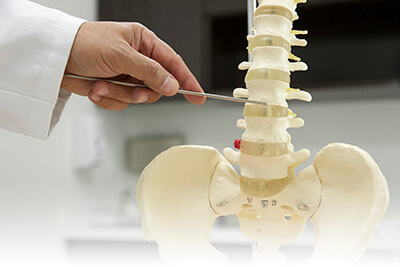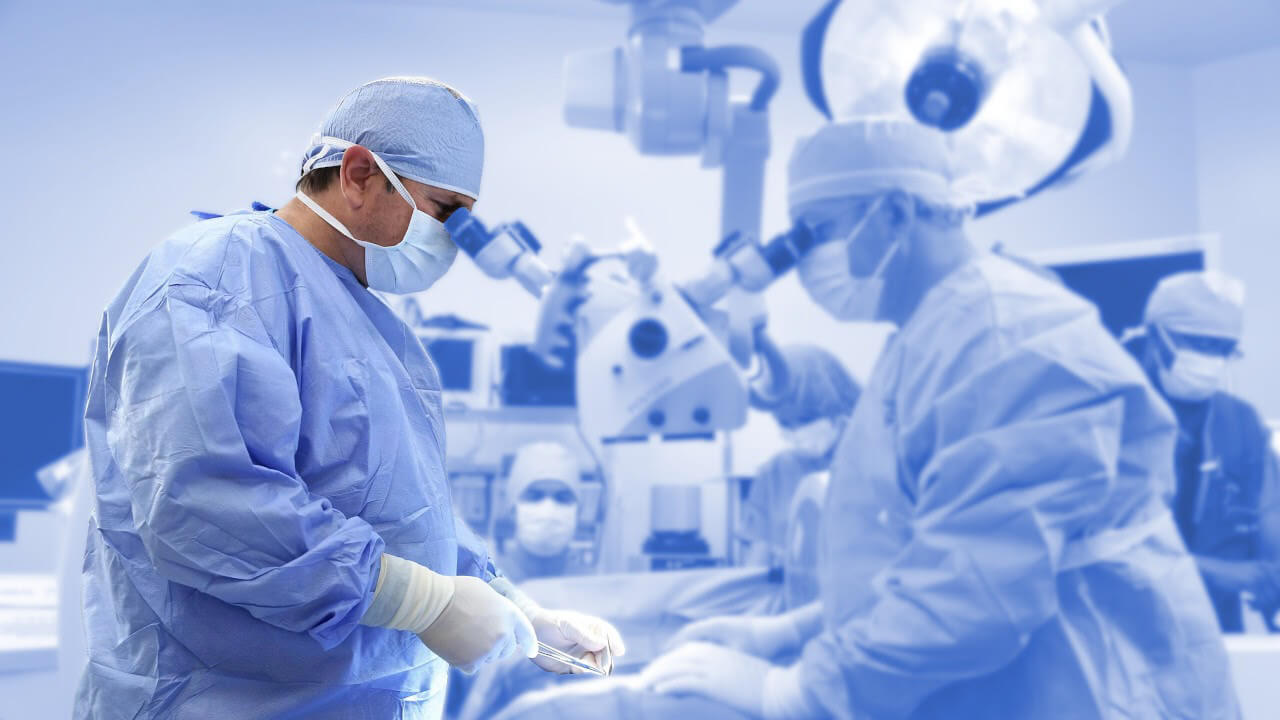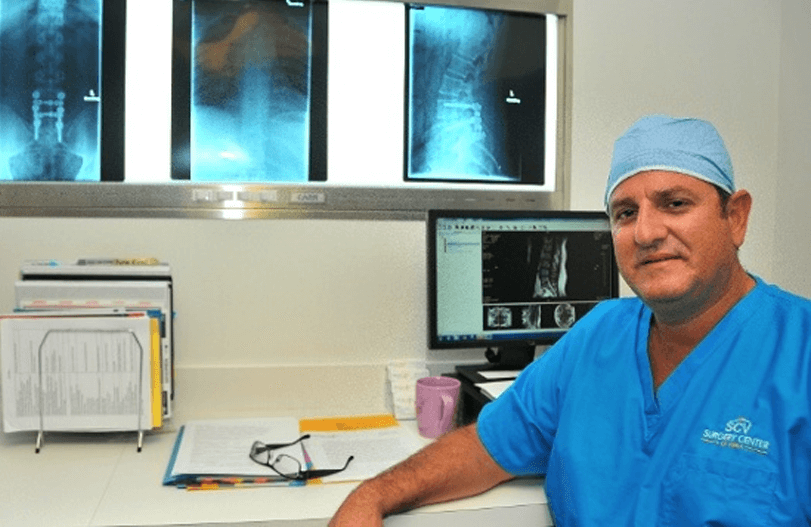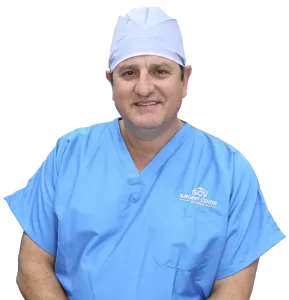

The spine is a tall column of bones called vertebrae that runs along the length of the back. The primary function of the spine is to lend stability, flexibility, and support to the upper body.
Nerves within the spinal column transmit signals from the brain to the rest of your body. Such nerves run at each level of the spinal canal and eventually exit the column via small bony openings known as the foramen. These tiny channels are crucial because they aid in the free flow of information between the brain and the rest of the body via the central nervous system. Other spinal cord components are the surrounding tissue and bone, which serve to protect the nerves from shock and impact.
Foraminal stenosis occurs when the openings between the spinal vertebrae begin to compress and narrow. This is often caused by herniated discs and degenerative spine disease and can lead to constriction of the spinal nerves. Because one of the nerve roots is irritated, this could impair the nerve's capacity to function. The body usually responds with discomfort - either at the source of the stenosis or anywhere along the nerve's route.
Foraminal stenosis goes by many names. It can also be referred to as foraminal compromise, foraminal narrowing, or foraminal spinal stenosis. Pinched nerves and foraminal stenosis are prevalent. Approximately half of all persons in their forties and fifties suffer from spinal stenosis and pinched nerves in the foramen.
The spinal column that surrounds and protects the spinal cord is a robustly designed structure but retains flexibility at joints between hard bones called vertebrae. The column comprises 34 bones: 24 articulated vertebrae and ten naturally fused vertebrae of the sacrum and coccyx.
Each vertebra comprises a prominent cylindrical body and a vertebral arch. The spinous process and a facet joint on either side form the arch. Various sections of the vertebra are linked by muscles, ligaments, cartilage, and discs.
The spinal canal is the centrally located space between the arch and the vertebral body. The spinal cord is housed and protected in the spinal canal. The foramina (singular foramen) are additional side apertures on the stacked vertebrae where the nerve roots branch out of the spinal cord and leave the spinal canal to go down arms or legs. A pair of spinal nerves exit the spinal column through the foramina at each disc level of the spine.
The constriction of one or more foramina (bony apertures) within the spine is known as spinal stenosis. Spinal stenosis is given several titles tailored to the specific site(s) where the constriction and nerve pinching occurs.
Foraminal stenosis and central canal stenosis are the two kinds of spinal stenosis.
Because both phrases refer to stenosis that appears laterally (to the side) of the spinal canal, the terms foraminal stenosis and lateral stenosis are widely used interchangeably.
The terms lateral recess and far lateral stenosis may also be used to pinpoint the spinal nerve compression site more precisely. The spinal nerve can be compressed right before it reaches the intervertebral foramen, causing lateral recess stenosis. When the spinal nerve has already exited the intervertebral foramen, far lateral stenosis occurs.
The vertebral foramen is a bony aperture in the middle of each vertebra that protects the nerve roots as they travel out the spinal canal and into the neck or pelvis. Central canal stenosis occurs when the area directly behind a disc gets narrow, usually from a herniated disc. The spinal cord has less room and may become pinched as a result of central canal stenosis. It is conceivable for a patient to have both foraminal and central canal stenosis at the same time.
A wide range of standard and less-known factors can contribute to the development of foraminal stenosis. In most cases, these conditions develop due to injuries to the joints surrounding the foramen including the disc and facet joints. When disc or facet joint injuries occur from trauma, inflammation occurs and scar tissue forms around the joints causing adhesions between joints and nerves in the foramen. Also ligaments get thicker and compress nerves. Finally, spinal alignment shifts can occur that cause even greater degree of narrowing of the spaces between bones including the foramen.
The standard causes of foraminal narrowing include;
When the intervertebral disc's outer tissue tears, its’ interior gelatinous core may begin to squeeze outward, compressing or irritating a spinal nerve in the neuroforamen. Inflammatory agents may be released by the leaked substance, which might inflame the nerve causing radiculitis. A herniated disc is always a result of trauma to the spine that is absorbed by the disc resulting in an annular tear.
Herniated discs are by far the most common cause of foraminal stenosis, and are the main cause in over 95% of cases.
After the disc herniates, intervertebral discs lose moisture and flatten out with time as part of the aging process. The vertebrae become closer together when a disc degenerates, and the foraminal space shrinks. The anatomical degeneration usually affects only one side of a spinal segment, resulting in unilateral foraminal constriction. Bilateral foraminal stenosis is a condition in which degeneration affects both sides of a spinal segment. Degeneration of a disc also leads to the formation of bone spurs at the back and sides of the disc causing further foraminal narrowing.
Bone spurs commonly grow and intrude upon the intervertebral foramen in the cervical spine's uncovertebral joints and/or disc. These uncovertebral joints are specific small bony joints where adjacent vertebral bodies articulate on the side. Likewise, as a result of facet joint osteoarthritis, bone spurs can form and constrict the foramen further crowding the nerve roots.
Other less common conditions that can contribute to foraminal stenosis include;
Pinched nerve symptoms differ depending on which section of the spine is afflicted by foraminal stenosis.
Cervical foraminal stenosis occurs when the foramen of the neck vertebrae begin to narrow and thus causes the nerves to become pinched and inflamed. In this case, the patient will experience cervical radicular pain, which will leave a sharp and burning sensation extending from the neck into the arms and shoulders. As the condition progresses, cervical radiculopathy will set in, causing numbness and weakness in parts of the arms and shoulders. Most patient symptoms associated with cervical spine foraminal narrowing are due to chemical irritation of the nerve root by a herniated disc in the foramen. The herniation causes inflammation to occur in the foramen and it gets onto the nearby nerve root to cause arm pain, numbness, weakness and tingling.
Thoracic foraminal stenosis happens when the foramen in the thoracic vertebrae narrows. Inflamed nerve roots in this area of your back can bring pain and numbness to the front of the upper body, affecting the chest and abdomen. However, it is worth noting that foraminal stenosis affects this location causing pain to wrap around the trunk under the ribs and can be quite painful.
The part of the spine most likely to be impacted by foraminal stenosis is the lower back. When the foramina in the lumbar spine narrows, lumbar stenosis develops. In this case, the buttocks, legs, and feet may experience discomfort, tingling, numbness, and weakness.With severe cases of narrowing patients can get weakness in their legs. Drop foot refers to a common condition caused by impingement on nerves at the L4-5 and L5-S1 discs that results in the foot dragging. This can be a safety issue for patients as they may trip and fall. With loss of strength, muscles may atrophy as well. Once atrophy begins to occur it is very difficult for a nerve to recover even with surgery. Early treatment is the key to long term recovery.
Foraminal stenosis usually develops gradually, with modest or sporadic symptoms at first. Specific actions or positions, such as rotating the head, might aggravate the pain by further compressing and inflaming the nerve in the neck. Symptoms may disappear totally for a short or long time after a flare-up before returning. When symptoms reappear, they might vary in intensity from mild to severe.
Foraminal narrowing does not cause pain independently. Pain, weakness, and numbness due to foraminal narrowing can be attributed to two factors:
Disc herniations, bone spurs (osteophytes), cervical degenerative disc degeneration, and thicker ligaments can directly compress the spinal nerve root. Bone spurs commonly form and impinge on the nerve root at the uncovertebral joint on either side of the vertebrae. Nerve root compression can be caused by decreased disc space due to the intervertebral disc losing moisture and flattening with age.
Biochemical processes also influence nerve root inflammation and injury. Inflammatory substances from a disc herniation can flow onto the spinal nerve root in the foramen, causing it to become inflamed.
When a cervical spinal nerve is pinched or irritated, it can cause neurological impairments in the shoulders, arms, and hands, such as numbness or weakness. Permanent numbness and paralysis might result if the nerve compression and related neurological impairments are not treated.
There is a three-step approach to get an appropriate diagnosis of foraminal stenosis.
The first stage is a comprehensive medical review of the patient's history. A physician must closely examine the patient’s medical records, which are expected to have exhaustive information regarding past illnesses or injuries, chronic health conditions, medications, family history, and past medical procedures.
Once this information has been gathered, the physician reviews it in conjunction with the patient's symptoms to eliminate specific scenarios and determine the most suitable route for further medical investigation.
Sequel to completing the medical review, the physician conducts a physical examination on the patient, paying particular attention to the affected region for any lesions, instability, and pain. It might also be necessary to incorporate some clinical examination into this stage to assess the affected body parts’ range of motion, reflexes, and perceived sensations.
In mild cases, these two steps might be sufficient to begin a treatment program. The physician is sometimes compelled to call for a medical imaging test to determine the location and severity of the condition. The most common test applied in this condition is the MRI scan. The scan is also helpful for picking up on asymptomatic cases.
Want A Free MRI Review? Our world-class surgeons at Deuk Spine Institute are standing by to review your MRI and provide a recommendation on the best way to get you out of pain, permanently. Request a free MRI review.
Several therapies for foraminal stenosis and pinched nerves are available, depending on the reason and severity of your symptoms.
In minor cases, complementary therapy techniques might be sufficient to relieve the patient. These include:
The physician might also prescribe medication to ease pain associated with foraminal narrowing, such as:
These are examples of anti-inflammatory pain relievers that many doctors would recommend. The patient must always take medication hazards and side effects into account. Warning labels should be read and followed carefully regardless of whether a medication is over-the-counter or prescribed. It's also critical to inform your doctor or pharmacist about all prescriptions you're taking, as well as any pharmaceutical allergies.
If non-surgical treatments fail to alleviate symptoms, the patient and the doctor may consider surgery. The type of surgery will be determined by where the stenosis is located and what is causing it. If a herniated disk pinches your nerve root, spine surgery to remove the bulging disk may be necessary.
Foraminotomy is a fairly-invasive, open-back surgery that is used to treat the effects of foraminal narrowing in the spine that requires the repositioning of tissues and cutting of bone to alleviate pressure on the nerve. The recovery time for a traditional foraminotomy is slow and steady, with patients driving a car and performing light physical activities after 8 weeks and a full recovery within 18 months.
At Deuk Spine Institute, we have developed an advanced Foraminotomy surgery, Deuk Laser Disc Repair, for relieving pressure on nerves in the foramen that is not only minimally invasive, but requires zero bone cutting. In fact, our procedure is so effective that this is an outpatient surgery and most of our patients go back to work in less than 3 days -- a fraction of the recovery time traditional Foraminotomy patients experience.
Deuk Laser Disc Repair is the safest and most effective surgical treatment for symptomatic foraminal narrowing and uses a laser to “open” up clogged foramen. Our method relieves pressure on the nerve root being compressed or irritated and allows natural healing to occur without the need for removing normal structures of the spine, placing metal implants or using cadaver bone products like other types of surgery do. This advanced spinal surgery has a 95% success rate and does not weaken or damage the spine, as shown in our peer-reviewed publication.
Foraminal narrowing is a progressive degenerative disorder that affects people as they get older. It is often impossible to prevent it from developing. Likewise, it is irreversible, and all treatment options only serve to alleviate the symptoms and effects of foraminal narrowing.
Fortunately, there are specific steps that can assist patients in minimizing the risk factors of foraminal narrowing and maintain healthy bodies well into old age. Many of these steps are related to lifestyle choices such as;

Robin
“I just wanted to let you know the outstanding job you did performing my neck fusion. I am now 100% pain free! You are an amazing surgeon and a life saver!”
Terry
“Thank you for the wonderful job you and your staff did repairing my spine. I have never felt better in 20 years! I found you to be very confident and honest and that put my mind at ease.”
Bruce
“The healing was much easier than I expected! Now, I am pain free, the nerve problems in my leg have disappeared, and I am performing activities again that I had previously given up.”
